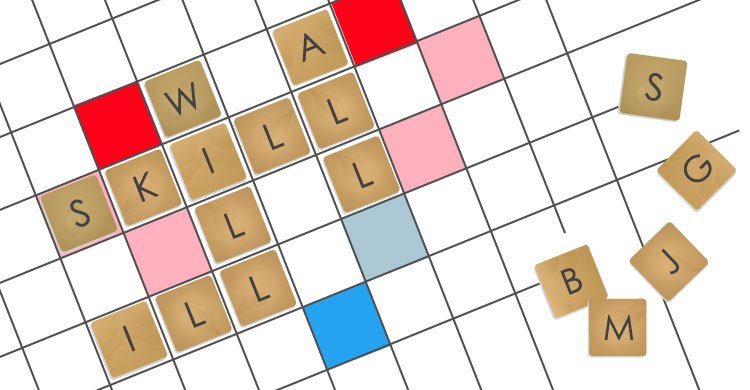Here’s how I typically initiate this conversation—it’s an exercise I call “Anchors to Sails.” I ask the audience to list all the factors that prevent all students (in their classroom, school, or district) from learning and thriving in school and in life. Without fail, the list of “anchors” is dominated by what David C. Berliner calls out-of-school factors (OSFs)—food insecurity, family relations and family stress, inadequate dental and medical care, community dynamics, and the many implications of poverty. Attendance, behavior, and emotional needs can also be considered symptoms of the OSF anchors.
The conversation is often filled with compassion and frustration, due to the perception that these factors are beyond our control and that despite our best efforts, many students are not learning because of anchors we are not equipped to address effectively. This is where our own mindset must shift, as we cannot allow our list of anchors to simply reflect the reasons kids cannot and will not learn. This is not the end of the conversation; it’s the beginning.
The reason our schools exist is to ensure high levels of learning for all students. If this is true, then when anything is preventing learning from happening, we must act. Otherwise we simply reference and acknowledge the out-of-school factors that significantly and dramatically impact learning as mere excuses for why children fail to learn—in a sense, claiming “it’s beyond our control” and “it’s not our fault.” Yet, if we believe we exist to ensure all students learn and we know why they are struggling to learn, then we must meet the challenge—together. What are we doing (systemically and strategically) for those who truly need more from us and more of us? How do we respond to kids who don’t learn when the reason they are not learning is more than will or skill? What do we do when students are suffering?
“School systems are not responsible for meeting every need of their students. But when the need directly affects learning, the school must meet the challenge.” (Carnegie Task Force on Education of Young Adolescents, 1989).
Putting the Community in Your Professional Learning Community
In all the places I have served, I have seen, heard, and felt the dramatic impact of community influence on the work we do and don’t do. External pressures and special interests more often than not drive our work, rather than the needs of our students. Therefore, I believe it is our responsibility to harness the entire community as a resource and inform, educate, engage, enlist, and empower everyone in the work that truly addresses what our children need. I am fortunate to have served in districts and communities that embraced and rallied around a deeper definition of student success (rather than solely based on a single, annual assessment).
“A Successful Child is a Whole Child: Safe, Connected, Supported, Healthy, Challenged, and Hopeful.” (See Culver City Unified School District’s Culver City Compact).
The “Collective Impact” work of John Kania and Mark Kramer through the Stanford Social Innovation Review exposes how the fractured and, at times, competitive nature of individuals and organizations who serve our most dependent populations not only limits the good we can do, it also demonstrates how ineffective we have been in addressing the glaring “basic needs” of our children. We must close this “Knowing—Believing—Doing Gap.” We know why so many kids are suffering, in and out of school; we believe in their capacity to learn; so, what are we doing (intentionally and strategically) to remove the anchors in their lives?
While working collaboratively to assess and intervene for “will and skill” barriers is vital and is at the core of our work, the impact of this work must also address the needs of the “whole child.” It cannot be a choice to do one or the other—systems truly committed to learning for all must do both—provide high-quality instruction focused on essential skills, coupled with a purposeful, strategic approach to address every nonskill need that impedes learning. When addressing PLC Question #3 (What Do We Do When Students Don’t Learn?), we must first ask and answer the question, “Why don’t they?”
I have seen the dramatic and measurable impact this work has on organizational culture, union relations, board role/behavior, and family/community/business engagement, and most importantly, student learning. With all the meaningful work, training, professional development, and “reform” efforts I have been a part of, I am convinced that a purposeful “whole child—whole community” approach within the PLC/RTI framework is the difference maker for those students who aren’t learning because they are suffering.
Putting a Vision for A.L.L. into Action
A. Acknowledge and Advocate:
The first step requires us to publicly declare our purpose (learning for all) and communicate the many factors interfering with making this a reality. We must express our commitment to removing every barrier to learning with the fact that we cannot do it alone. We must identify and quantify the anchors in our students’ lives, increase awareness, and promote a vision of meaningful community partnerships that specifically address the needs of our students. While it’s appropriate to acknowledge our inability to assume the role of service provider for every student/family need, we must also affirm our commitment to serve as “case managers” and connect students and their families with partners who possess the skills and resources to meet their needs.
L. Lead:
The “Collective Impact” work of John Kania and Mark Kramer noted above highlights the critical role of leadership for effective, cross-agency collaboration. An intentional and strategic model with multiple organizations, agencies, and invested individuals requires a “backbone organization.” Few of us have the luxury of a well-staffed and financed community agency that will serve in this capacity. Therefore, we must serve as the backbone organization—recruit partners, host events, chair the shared-leadership team, provide evidence of need, and facilitate commitment to common goals. (See sample invitation to initial Whole Child, Whole Community event).
L. Learning:
Let’s be clear. The purpose of this coordinated effort is not simply about feeding children on the weekends, providing on-site mentoring, conducting health screenings, and offering parenting classes. This work must serve our purpose—learning. We know effective intervention must be timely, targeted, provided by highly qualified adults, and must address causes and not only symptoms. When students struggle to master essential skills and behaviors due to out-of-school factors, our intervention plans must intentionally enlist programs and partners to remove these anchors, so students can access and respond to our academic supports. Within our schools, we meet to discuss students who are not learning, and as noted above, the most effective plan addresses not only what they are not learning but also why they are not learning. A backpack filled with food for the weekend, a weekly visit with a mentor, free participation in community parks-and-rec programs, after-school and summer activities, free glasses and dental care, individual and family counseling … are essential to effective intervention plans for students who are “ill.” The bottom line of such a wraparound approach is the reason we exist—learning for all.
All Is Possible
This is not easy work. We cannot expect or wait for new legislation or external funding to drive this collaborative, school-community-based model. We know our kids, their hopes, dreams, and hurts. We know what propels them to success and what prevents them from thriving. Supporting this vision and work in my former school systems was the core belief that “all children are capable of success—no exceptions.” This is the guiding belief of Kids at Hope, an organization committed to challenging the labeling and devaluing of children who struggle as “at-risk.” We agree that out-of-school factors are the reason so many of our students do not learn, and ultimately grow into adults lacking essential knowledge, skills, behaviors, and beliefs—about themselves and their future. Yet, simply acknowledging this fact is not enough. We must do more—and “we” must include more than the talented, caring, and dedicated educators in our schools. We must enlist the community as key partners in our professional learning community.
“We control very few of the risk factors that cause children to suffer in school and in life; however, we do control the factors that give them hope.” —Rick Miller, founder and chief treasure hunter of Kids at Hope
References:
Carnegie Council on Adolescent Development. Turning points: preparing American youth for the 21st century. New York: Carnegie Corporation; 1989.
[author_bio id=”94″]






